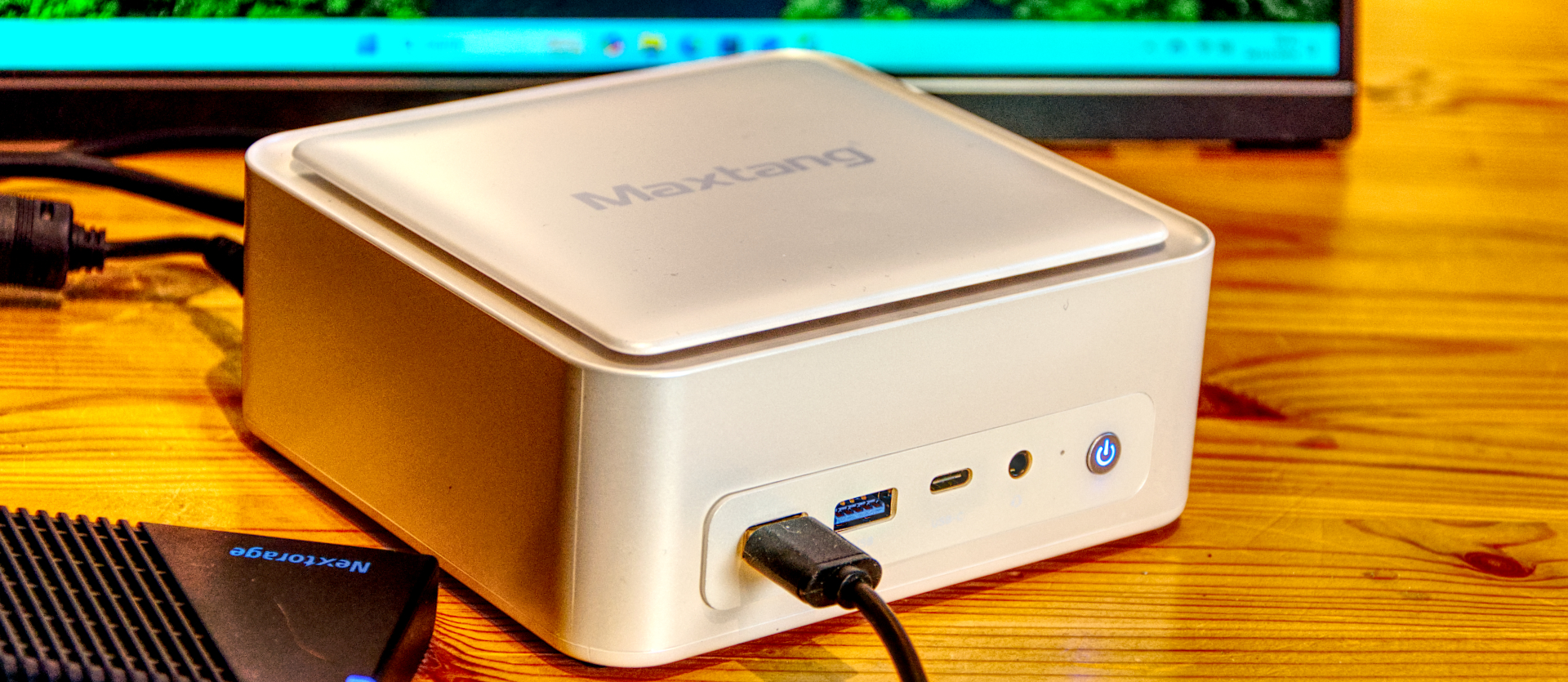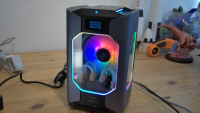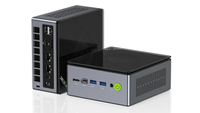TechRadar Verdict
Unless you are explicitly looking for a machine designed for an external GPU or with dual LAN ports for a firewall, the FP750 is a decent option. A better-quality case and greater availability of the best model would help Maxtang shift more of these.
Pros
- +
Powerful AMD processor
- +
Dual M.2 Slots
- +
USB 4.0
- +
Easy internal access
Cons
- -
Screws under rubber feet
- -
Plastic case
- -
Patchy availability
Why you can trust TechRadar
30-second review
Maxtang is a well-known brand for embedded PC solutions but has now become more active in producing Mini PCs. Its Maxtang T0-FP750 uses recent AMD mobile silicon to offer a compact yet powerful system in a classic NUC form factor.
Available in Space Gray and Pearl White, and with a selection of processors, memory and storage configurations, the entry-level cost is low, and even the high-end models are affordable.
The expected trade-off here is that this is unashamedly a device built for a price, so don’t expect anything fancy like a metal enclosure. The FP750 is entirely plastic on the outside.
Thankfully, the inside is full of genuinely useful parts that elevate the FP750 into a powerful desktop PC replacement and a real workhorse.
My review system had an AMD Ryzen 7 8845HS, a twelve-core processor with an integrated GPU designed originally for laptops. Therefore, it can run for long periods without generating excessive fan noise while providing more than enough punch for typical Office tasks.
Does it have the feature set to be one of our best mini PCs? Possibly. The Mini PC market is becoming an increasingly active sector, and buyers are often looking for something unique or unusual. The FP750 fits neither of those criteria, but it offers a good option for a person or business wanting to provide work-from-home systems affordably.
Where it isn’t ideal is the availability of some variants, like the review model, which seems challenging to source now.
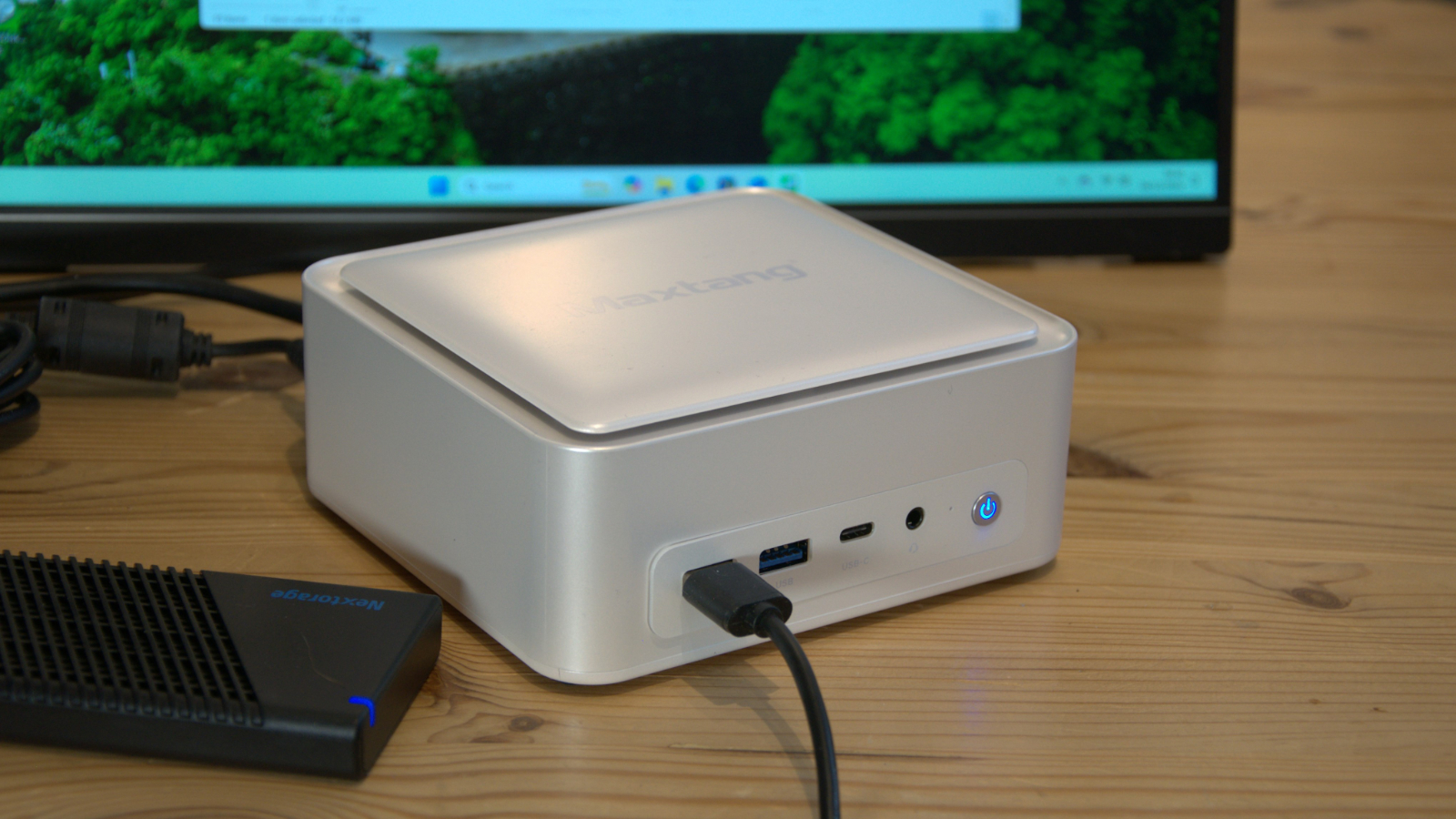
Maxtang T0-FP750: Price and availability
- How much does it cost? From $250/£204
- When is it out? Out now
- Where can you get it? Aliexpress, Amazon and direct from the makers
I appreciate that following the cost information for this product is a challenge. It's confusing even for me, the writer of this review.
On the Maxtang website, there are multiple models of the T0-FP750, using the Ryzen 9 6900HX, Ryzen 7 8845HS, and the Ryzen 5 6600H.
As you can expect, the Ryzen 5 6600H machines are the cheapest, and the Ryzen 9 6900HX is the most expensive.
Except when you find these on the official Maxtang store on AliExpress, only the Ryzen 5 6600H and Ryzen 9 6900HX models are listed.
Both processor options, in two available colours, come as barebones with no memory or storage and with different memory sizes and storage capacities.
The cheapest barebones Ryzen 5 6600H is only $250, and one supplied with 32GB of RAM and 1TB of storage costs $396. The cheapest barebones Ryzen 9 option is $299, and one with 32GB of RAM and 1TB of storage costs $460.
UK pricing has the Ryzen 5 for only £204 barebones and £321 fully populated, and the Ryzen 9 is £244 for the unpopulated model and £374 for the maxed-out option.
The cheapest populated models with 16GB of RAM and 512GB for each machine are about £100/$100 more than a barebones machine and come with Windows 11 Pro pre-installed.
On the Maxtang website, the Ryzen 7 8845HS is listed as costing from $619 to $649, but those are populated systems with no barebones option.
The only place we found the review specification processor was on Amazon.com, where a barebones machine with no memory or storage costs $499. It's also worth pointing out at present only Amazon and AliExpress offer the barebone version.
- Value: 4 / 5

Maxtang T0-FP750: Specs
| Item | Spec |
|---|---|
| CPU: | AMD Ryzen 7 8845HS (8 cores, 16 Threads) |
| GPU: | Radeon 780M |
| RAM: | 32GB DDR5-5600 (2800 MHz) (16GB x 2) Expandable to 64GB |
| Storage: | 1TB M.2 2280 PCIe Gen 4 |
| Expansion: | 1x M.2 2280 PCIe Gen 4 |
| Ports: | 1x USB 4.0 Type-C, 2x USB 3.2 Gen 2 Type-A, 1x USB 3.2 Gen 1 Type-C, 1x USB 2.0, 1x HDMI 2.0, 1x DisplayPort 1.4, 1x 3.5mm CTIA |
| Networking: | 1x 2.5GbE LAN, WiFi 6e, Bluetooth 5.2 |
| OS: | Windows 11 Pro (pre-installed) |
| Base Power: | 35W-54W (configurable) |
| PSU: | 19V 6.32A 120.08W |
| Dimensions: | 127 x 135 x 55 (mm) |
Maxtang T0-FP750: Design
- Plastic construction
- Relatively easy access inside
- Dual M.2 2280
There are complicated ways to make Mini PCs, and then there is Maxtang's approach with the T0-FP750. This is a simple plastic box in which air is drawn from underneath via perforations in a hexagonal layout. After cooling the internal parts, it’s expelled from the top through slots around the lid and from the rear above the I/O area.
The lack of any metal is a little disconcerting, and how the appearance of this equipment might suffer once in an office environment is a concern.
Access to the internal technology is by removing the underside, which is held in place by four screws hidden under the rubber feet. Adhesive for the feet is never the same after removal, so you should plan to do this only once if you can.
Why the screws couldn’t go through feet that remain in place or just not be hidden by the feet is a mystery. But, we wish Mini PC makers would stop this practice.
However, once the feet are off and the screws are out, you have full access to the internals, including the DDR5 memory and M.2 slots.
In my review machine, two Crucial-branded 16GB DDR5 modules were present, giving 32GB. Should you need more RAM, these can be removed and replaced with larger SODIMMs.
Maxtang quotes the maximum memory as being 64GB, but the Ryzen 7 8845HS will address up to 256GB even if 128GB modules are not widely available. Sadly, I didn’t have any 48GB DDR5 modules handy to see if 96GB was possible in the two slots, but it might be.
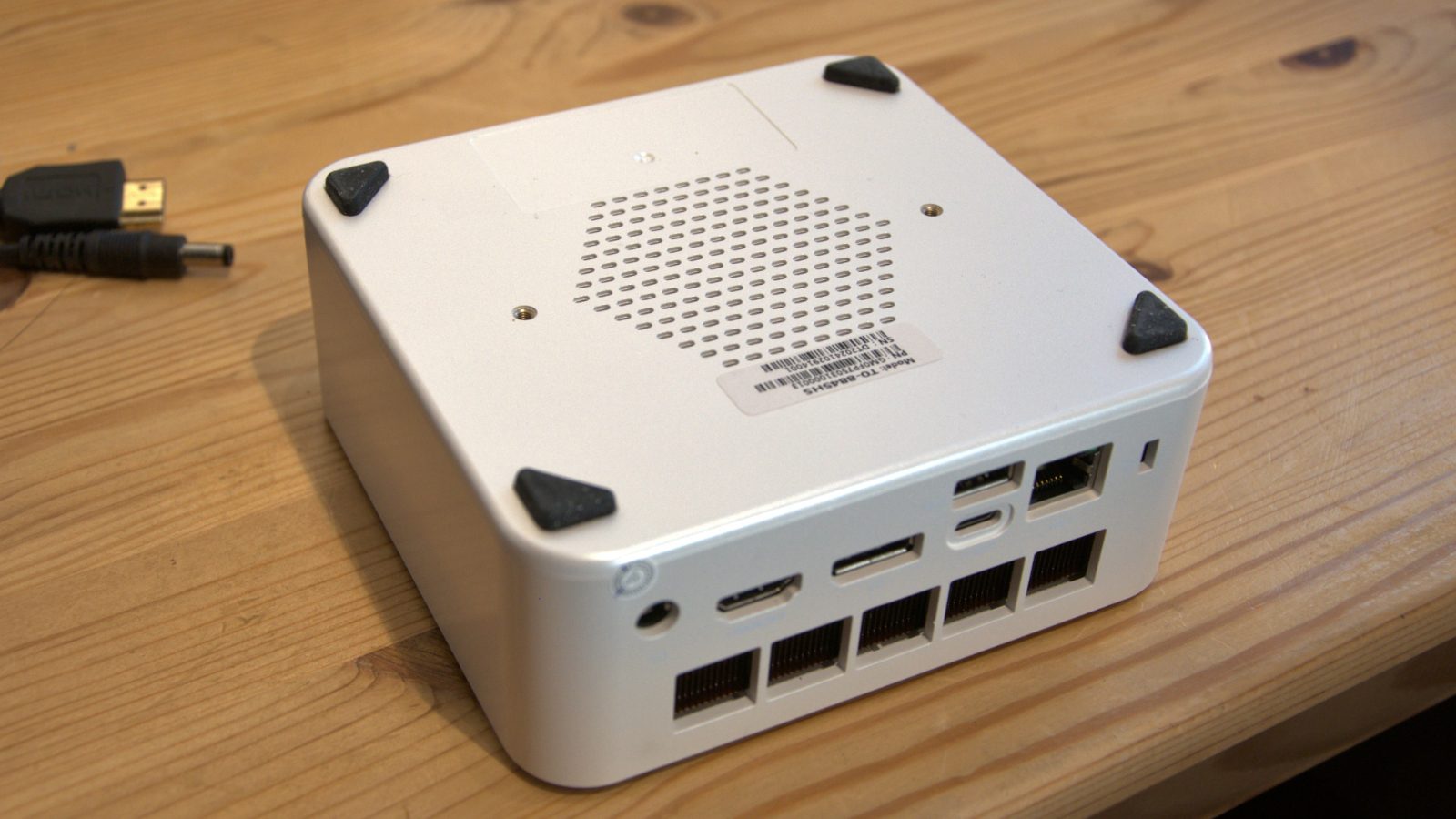
For me, easily the best aspect of the inside is that the NUC has two 2280 NVMe M.2 slots, with one already occupied by the 1TB boot drive. With two slots, it's much easier to put new SSDs in place and clone the contents from the original module.
Technically, the WiFi module occupies a third M2. If you are prepared to give up WiFi, that’s another M.2 2230 that could take a small SSD drive.
The pre-installed drive had a heatsink, and given the relatively small amount of space and the limited cooling, we’d recommend only using NVMe drives that come with a heatsink.
Overall, other than the hidden screws under the feet, the layout and internal design of the T0-FP750 are fine, and the pearlescent white ours was coloured is undoubtedly a divergence from the normal colours these computers are typically finished.
- Design: 4 / 5
Maxtang T0-FP750: Features
- AMD Ryzen 7 8845HS (8 cores, 16 Threads)
- 20 PCIe Lanes
- Radeon 780M
The AMD Ryzen 7 8845HS features eight cores and sixteen threads, with a configurable power range from 35W to 54W, tailored to the specific application demands. In contrast to laptops, which focus on battery conservation, power adjustments in this context are more about heat management.
This Zen 4 architecture leverages the efficient 4nm FinFET manufacturing process, enabling it to operate quietly or deliver impressive performance.
While Intel has transitioned to using three different core types within its Ultra processors, AMD maintains its established approach of eight cores, all equipped with hyperthreading capabilities. The advancement lies not in the overall architecture but in maximising the potential of each core. The 8845HS is equipped with sufficient cache and clock variability to perform a wide range of tasks, along with twenty PCIe 4.0 lanes available for connecting external I/O without running head-on into bandwidth issues.
Often, Mini PCs lack the physical space to accommodate all the ports this system could potentially support, but that’s not an issue in this system. There are unused I/O locations, and it only supports a single LAN port, whereas many alternatives have two.
It also lacks the OCuLink port that we saw on the GMKtec NucBox K7 and K7 Pro, but it does have a single USB 4.0 that could be used for an external GPU connection.
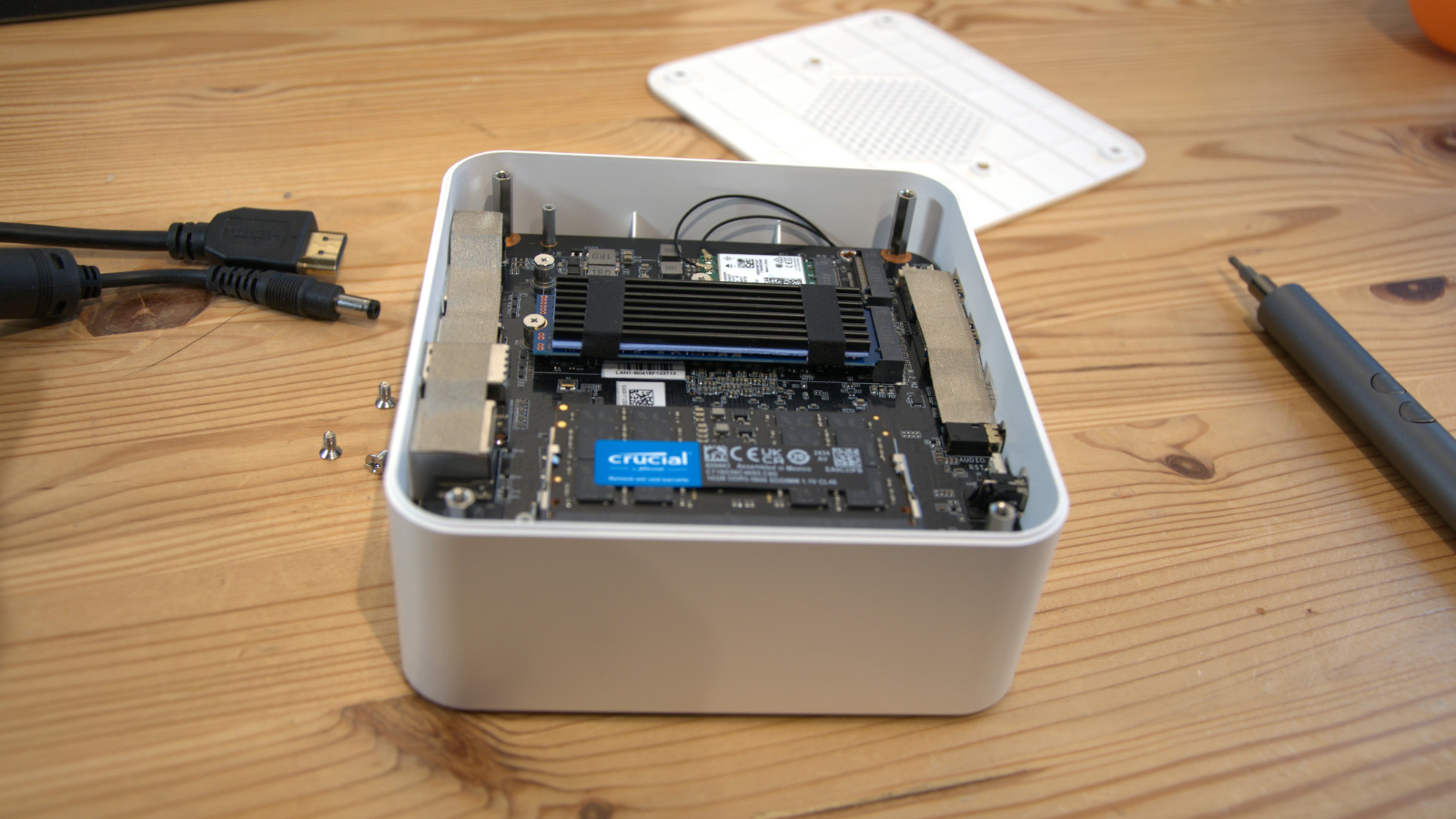
However, a notable shortcoming of this platform lies in the Radeon 780M, which restricts the FP750s suitability as a gaming system. For an integrated GPU, the 780M isn’t terrible, but Intel has overtaken AMD with its ARC series GPUs, and the switch from the 680M to the 780M was massively underwhelming.
Overall, the performance of this system exceeds that required by a typical home or office user, aligning more closely with desktop-level capabilities. That makes it more suitable for a small server role or for power users who want an easily transportable desktop system.
Included in the box is a mounting plate for attaching the FP750 to the rear of a monitor, which, if you don’t need regular access to the ports, is a good way to run this system discretely.
- Features: 4 / 5
Maxtang T0-FP750: Performance
| Mini PC | Header Cell - Column 1 | Maxtang FP750 | GMKTec NucBox M7 Pro |
|---|---|---|---|
| CPU | Row 0 - Cell 1 | AMD Ryzen 7 8845HS | AMD Ryzen 9 PRO 6950H |
| Cores/Threads | Row 1 - Cell 1 | 8C 16T | 8C 16T |
| RAM | Row 2 - Cell 1 | 32GB DDR5 (2x16GB) | 32GB DDR5 (2x16GB) |
| Storage | Row 3 - Cell 1 | 1TB NVMe Kingston SNV2S | 1TB |
| Graphics | Row 4 - Cell 1 | Radeon 780M | Radeon 680M |
| 3DMark | WildLife | 18696 | 15703 |
| Row 6 - Cell 0 | FireStrike | 7924 | 7036 |
| Row 7 - Cell 0 | TimeSpy | 3373 | 2811 |
| Row 8 - Cell 0 | Steel Nom Lt. | 2937 | 2497 |
| CineBench24 | Single | 104 | 94 |
| Row 10 - Cell 0 | Multi | 858 | 772 |
| Row 11 - Cell 0 | Ratio | 8.27 | 8.23 |
| GeekBench 6 | Single | 2621 | 2167 |
| Row 13 - Cell 0 | Multi | 12207 | 10454 |
| Row 14 - Cell 0 | OpenCL | 30649 | 29730 |
| Row 15 - Cell 0 | Vulkan | 34291 | 30797 |
| CrystalDisk | Read MB/s | 3781 | 3544 |
| Row 17 - Cell 0 | Write MB/s | 2644 | 2145 |
| PCMark 10 | Office | 6889 | 7064 |
| WEI | Row 19 - Cell 1 | 8.2 | 8.2 |
| Mini PC | Row 20 - Cell 1 | Maxtang FP750 | GMKTec NucBox M7 Pro |
| CPU | Row 21 - Cell 1 | AMD Ryzen 7 8845HS | AMD Ryzen 9 PRO 6950H |
| Cores/Threads | Row 22 - Cell 1 | 8C 16T | 8C 16T |
The T0-FP750 benchmarks gave me a fascinating insight into how much better the Ryzen 8000 series was over the 6000 series. Because for the majority of tests, the FP750 and its Ryzen 7 8845HS are superior to the Ryzen 9 6950H used in the GMKTec NucBox M7 Pro.
The difference is typically around 10%, demonstrating that at each stage of the Ryzen mobile processor evolution, AMD has managed to find some significant improvements.
The only real disappointment to find in these numbers is that neither Maxtang nor GMKtec put an NVMe drive in these systems that could use the Gen 4 M.2 slot bandwidth properly.
While the Kingston SNV2S used in my review machine is a PCIe 4.0 specification drive, an alternative like the WD SN850X can double these speeds in reading and writing.
Maxtang might argue that the heat generated by a high-performance drive might be too much in an NUC enclosure, but I suspect that the Kingston SNV2S was chosen based primarily on price.
- Performance: 4 / 5
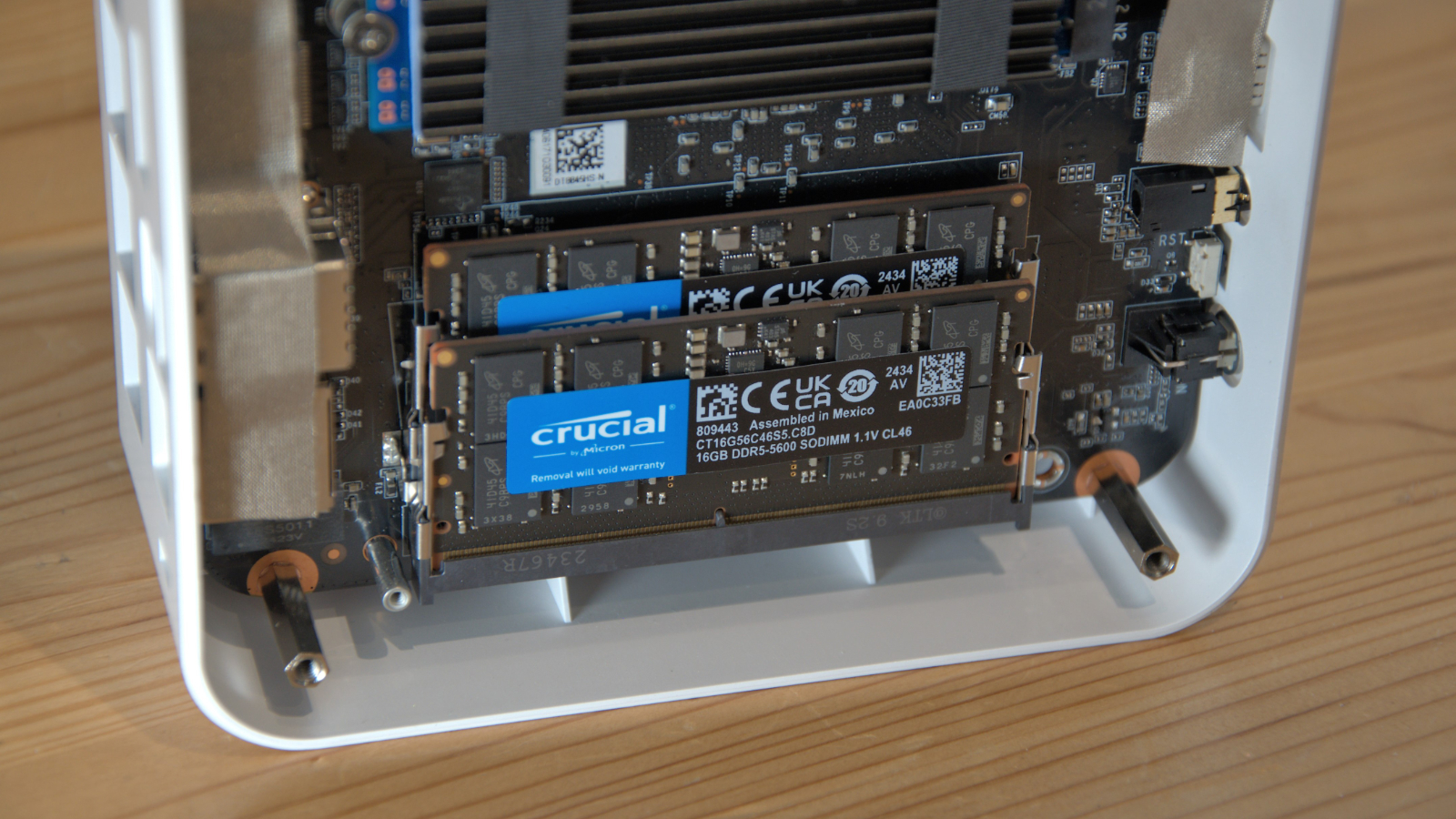
Maxtang T0-FP750: Verdict
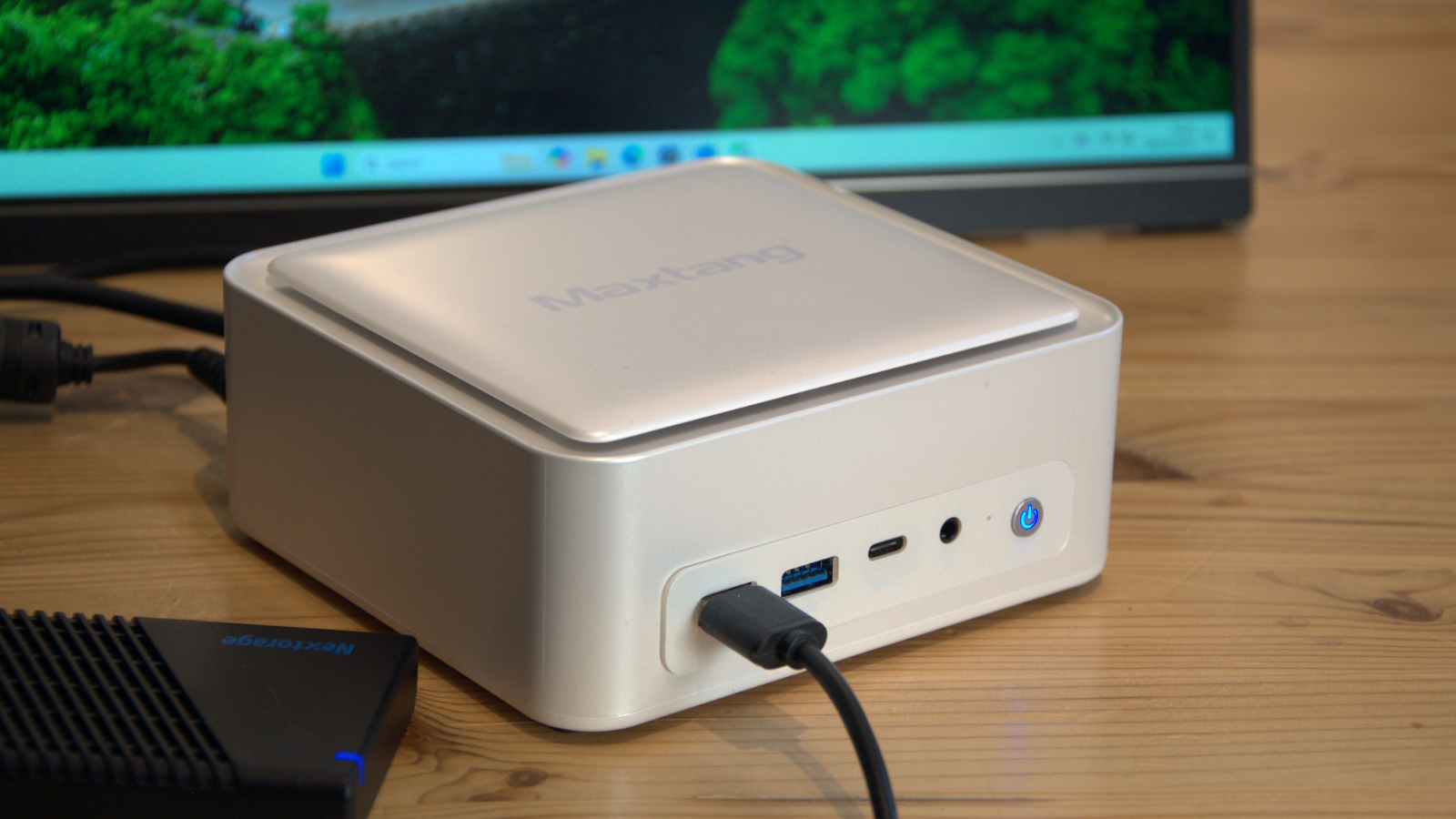
There are a few drawbacks to the Maxtang FP750, such as if you need different ports, such as Thunderbolt or OCuLink, but none make it unusable. I’ve seen plenty of metal cases recently, and this one is plastic, but unless colleagues in your office throw systems at each other, it will probably survive long enough to justify its investment.
I found the screws-hidden-under-feet scenario annoying, but most Mini PCs aren’t upgraded more than once in a lifetime, and glue is readily available.
The only genuine issue with the Maxtang FP750 is the availability of the review model, the one with the highly effective Ryzen 7 8845HS inside. The other, less impressive models are easier to find, and the Ryzen 5 barebones are great value for those with M.2 drives and some DDR5 SODIMMs spare.
In short, there isn’t anything outstanding about this Mini PC, but equally, Maxtang didn’t make any horrendous mistakes with it either.
Should you buy a Maxtang FP750
| Value | Excellent specification for the asking price | 4 / 5 |
| Design | Easy to get inside and upgrade, once you have pulled the feet off. | 4 / 5 |
| Features | Dual M.2 slots and powerful processor options. | 4 / 5 |
| Performance | Quicker than a 6000 Series Ryzen 9 | 4 / 5 |
| Overall | Affordable system that?s powerful enough for most jobs. | 4 / 5 |
Buy it if...
You need a system with punch
Especially with the processor in this review machine, the FP750 can outperform many desktop PCs, and it's quiet, too.
There are limitations to what it can do graphically, but for general office tasks the performance is more than enough.
You perform upgrades
Upgrading the FP750 is as easy as it generally gets, as getting to the memory and storage only involves pulling four feet off and removing four screws.
The memory is socketed, so you simply remove the modules inside and replace them with larger ones. Having a second M.2 slot allows easy cloning or adding extra capacity.
Don't buy it if...
You need ports
The lack of ports on this machine could be an issue if you need more than one USB 4.0 port. Attaching a USB 4.0 compatible dock might help, but it would be easier and maybe cheaper to buy a Mini PC with the ports you need from the outset.
You want OCuLink
While it has a USB 4.0 port, this Mini PC doesn’t have OCuLink for connecting an external GPU. It is possible to connect one using USB 4.0, but the performance isn’t on par with that of OCuLink or PCIe-connected video cards.
Also Consider
Geekom MegaMini G1
The MegaMini G1 is unlike any other SSF system you will likely encounter. Based on the Intel Core i9-13900K processor, it has OCuLink, but it also has a discrete GPU inside with water cooling. You can't upgrade the RTX 4060 inside the case, but you can add an even more powerful GPU using the OCuLink connection.
Check out our Geekom MegaMini G1 review
GMKtec NucBox M7 Pro
One of the latest Mini PC designs from GMKtec, the M7 Pro retains the classic NUC scale but uses an AMD Ryzen processor and not Intel. This machine can connect to an external GPU over an OCuLink cable, but you will need to source an OCuLink external enclosure, as GMKtec hasn't made one yet.
Check out our GMKtec NucBox M7 Pro review
Mark is an expert on 3D printers, drones and phones. He also covers storage, including SSDs, NAS drives and portable hard drives. He started writing in 1986 and has contributed to MicroMart, PC Format, 3D World, among others.
